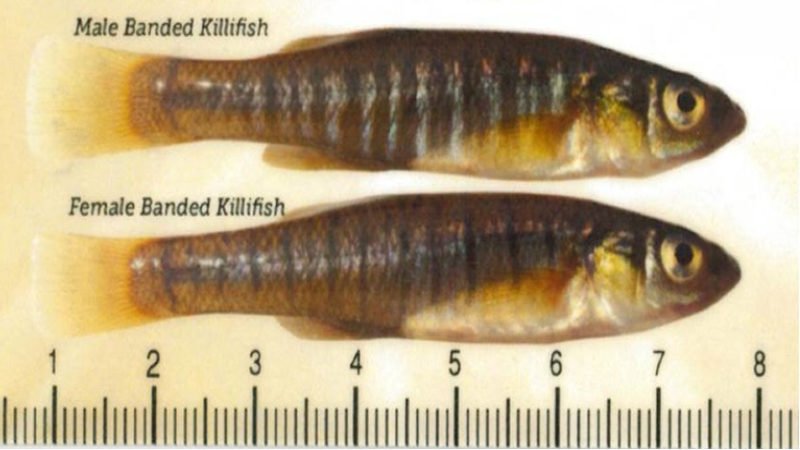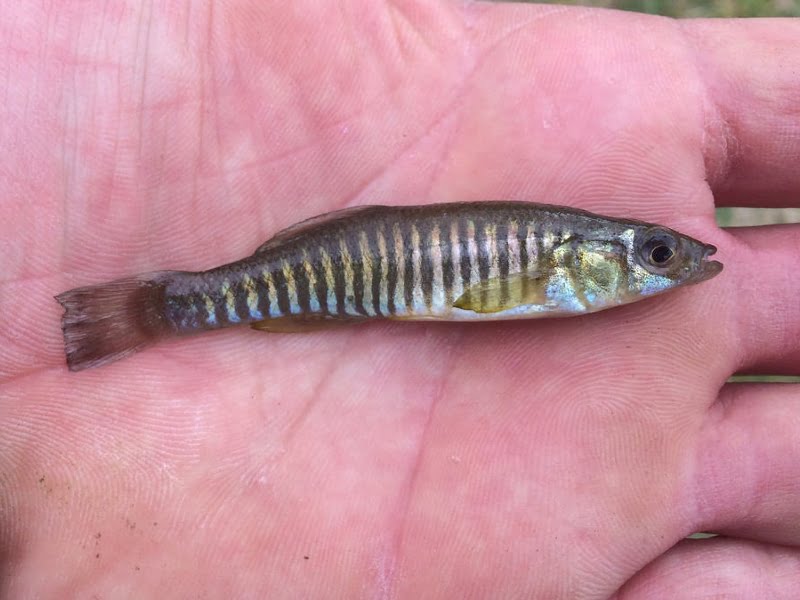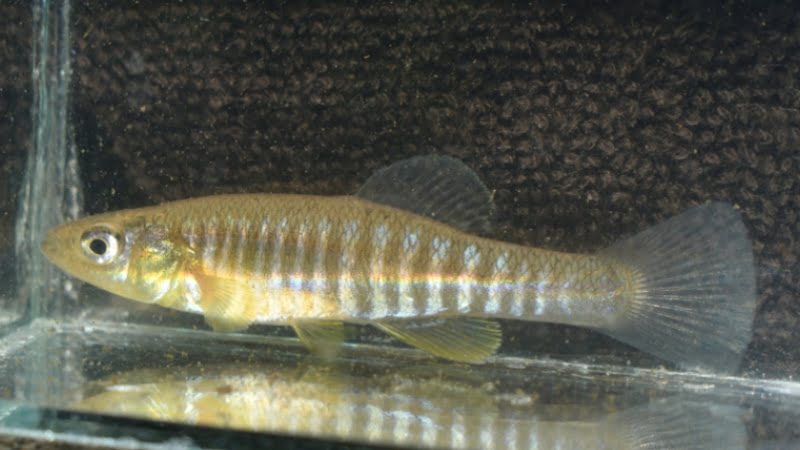Killifish are quite a famous community fish species, but not many know about eastern banded killifish, one of the endangered breeds of killie. The eastern banded killifish come from the eastern part of North America, where biologists and aquarists have spotted a wide variety of this species.
But why is this specific breed is endangered? How do they live in their natural habitats? Are you interested in getting to know the details with me?
Characteristics Of Eastern Banded Killifish
GPlease get to know 3 exciting pieces of information about eastern banded killifish with me.
Body Shape And Size

For community fish, I find banded killifish to be quite large in size. Banded killifish is a small shoaling fish that can reach from 4 to 5 inches in length. Like many other fish species, female banded killifish tend to be longer than their male counterparts. As for the body shape, killifish are famous for their tube-like, slim, and long body.
Color Patterns
Eastern banded killifish isn’t very colorful, but the stripe pattern sure adds uniqueness to its appearance. Along the body of this breed, we can see numerous verticle stripes in metallic silver or black color. The number of the stripes varies a lot, so there doesn’t seem to be any genetic rule that determines the exact number. However, we should be able to spot from 10 to 15 rays.
Origin Of These Killifish
The distribution of banded killifish in eastern North America is extensive. They can be found from South Carolina to the Atlantic Provinces. The easternmost part of their range is found around Newfoundland, and there are 10 documented populations of banded killifish in this location:
- Garnish Pond
- Freshwater Pond
- Winterland
- York Harbour
- Ramea Island
- Loch Leven
- Grand Bay West
- Stephenville Crossing
- Indian Bay Watershed

Habits
Like most killifish breeds, Eastern banded killifish can jump above the water surface. But unlike some breeds that can survive outside of the water body, like mangrove killifish, the banded breed will die off if not get back to the water after jumping.
If you are keeping this type of killifish, it’s highly recommended to cover the entire opening of the tank. These fishes can even fit through tiny holes. So if the lid isn’t solid, they might jump outside through the splits.
Eastern Banded Killifish Are Endangered
In 1989, the Illinois banded killifish was classified as endangered due to its restricted habitats and low population. Up to date, this breed’s scarcity still remains the same as before, which means that eastern banded killifish are rare. They shouldn’t be exploited for commercial purposes, aka remaining non-game.
The wild killifish population is declining due to climate change, habitat loss, and human interactions with their living environment. Numerous industrial developments like road building, forestry activities, etc., cause negative impacts on the wild killifish population, which leads to the decreasing population.
There are about 236 breeds of killifish that aren’t exploited for commercial purposes, among a total of 1,270 breeds.
Video: Fundulus diaphanus (Banded Killifish) – Basic Info
FAQS
Are killifish endangered?
Fish scientists and fish enthusiasts have long been fascinated by the biology of killifish. However, human encroachment and habitat loss contribute to a decline in the killifish population in the wild. Aquarists can still purchase killifish from farms and breeders, but finding a natural killifish is exceptionally challenging and isn’t recommended.
Is a killifish a community fish?
Killies make a great community fish. They can live with small, peaceful fish like neon tetras or rummy nose tetras that require the same water conditions. Fishes like angelfish, swordtails, or bettas are mostly bigger than killifish and will make horrible tank mates.
Where do eastern banded killifish live?
Eastern banded killifish come from and live in eastern North America. This is where aquarists can commonly find killifish in their natural habitat. Newfoundland and Labrador is the location where this species spawn the most.

Annette M. Chaney is an experienced marine biologist with over 20 years of experience as an aquarist and fishkeeper. She started her first aquarium at a young age, filling it with frogs and goldfish obtained from the ten-cent pet store.
Annette grew up caring for and breeding African Cichlids, which led to a hobby in high school that doubled as a profitable means. Attending Reed College gave her time to solidify herself as an accomplished aquarium caretaker with an eye for sales. After that, from 2009 – 2013, she studied at Roger Williams University – one of the most prestigious universities for Aquaculture and Aquarium in USA. She is the founder of AquariumCircle since 2010.
